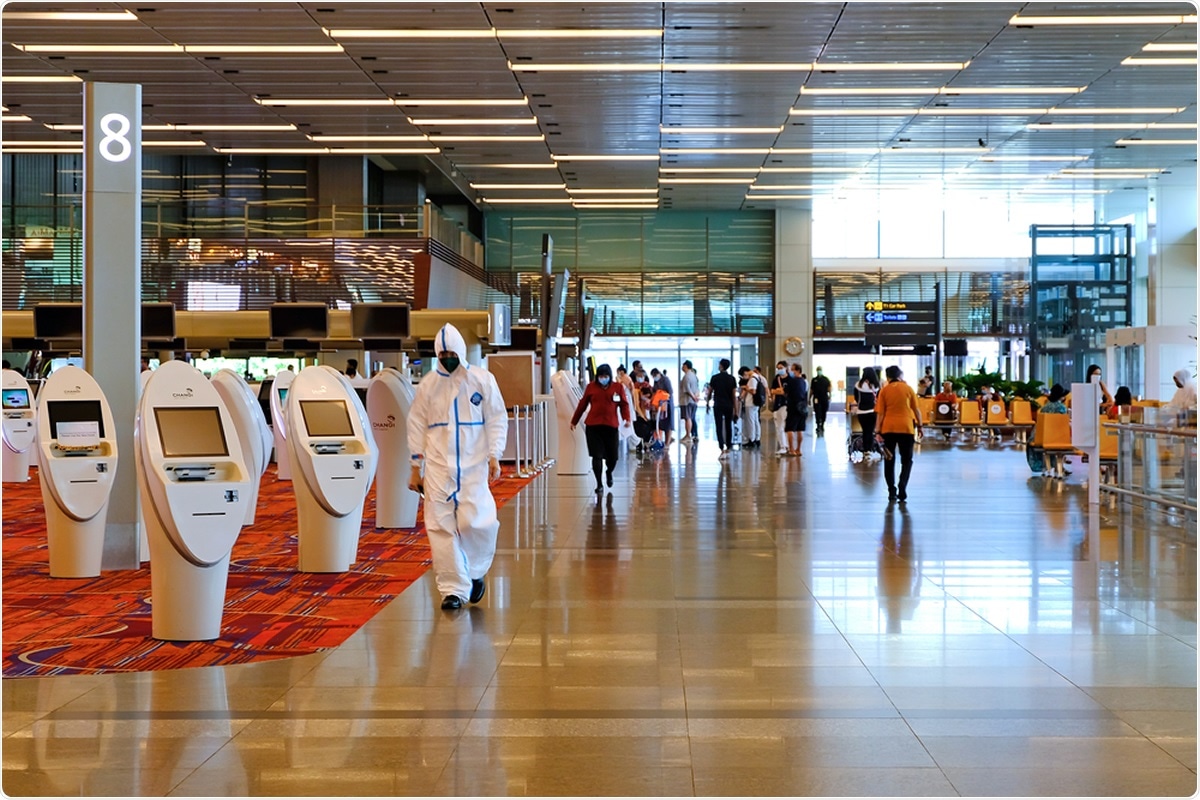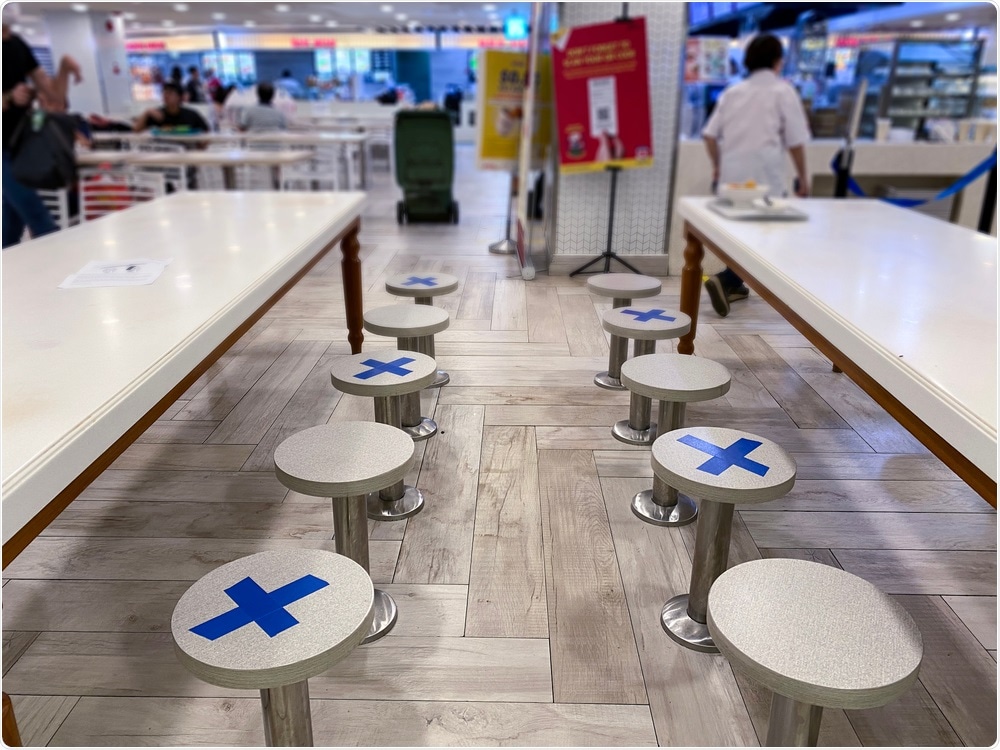The coronavirus disease (COVID-19) pandemic, caused by the severe acute respiratory syndrome coronavirus 2 (SARS-CoV-2), is far from over. Many countries reported skyrocketing cases since restrictions were lifted. With more people mingling and meeting each other, the virus is again spreading uncontrollably in many parts of the world.
Now, a team of researchers at the National Centre for Infectious Diseases in Singapore aimed to determine the transmission risk factors of SARS-CoV-2 among household and non-household contacts.
Singapore, an island city-state in maritime Southeast Asia, is regarded as one of the countries that have successfully flattened the curve. With skyrocketing cases in the first phases of the outbreak, the country was successful in mitigating the spread of the virus, thanks to extensive contact tracing, quarantine measures, and intensive health surveillance.

Singapore Jun 2020 Covid-19. Changi Airport. Image Credit: kandl stock / Shutterstock
The study
In the study, published in the prestigious journal The Lancet, the researchers included all close contacts of confirmed cases of COVID-19 in Singapore, which were identified from January to April.
The team described household contacts as those people who shared a residence or household with an index COVID-19 case. On the other hand, non-household contacts are those who had contact for at least 30 minutes within 2 meters of an index case.
In Singapore, all positive SARS-CoV-2 cases were admitted to an inpatient facility, wherein only healthcare personnel have access. Their contacts, both household and non-household, were quarantined for 14 days with three-times a day of symptom monitoring through telephone calls. Those contacts with symptoms underwent polymerase chain reaction (PCR) testing for SARS-CoV-2.
From there, the team computed the secondary clinical attack rates from the prevalence of PCR-confirmed SARS-CoV-2 among the close contacts.

Singapore Mar 2020 Social distancing rules in practice, alternate seating in local public food courts. Image Credit: kandl stock / Shutterstock
Study findings
From January to April, there were 1,114 PCR-confirmed COVID-19 cases in the community in Singapore. There are 13,026 close contacts identified, wherein 1,863 were household contacts, 2,319 were work contacts, and 3,588 were social contacts.
About 1,779 household contacts were analyzed, and 468 underwent symptom-based PCR testing. Also, PCR testing was performed on 332 of the work contacts and 458 of the social contacts.
The team found that the secondary attack rate among the household contacts was 5.9 percent, 1.3 percent among the work contacts, and 1.3 percent among the social contacts. This means that household contacts are more likely to contract the virus compared to people outside, such as workmates and acquaintances.
“Our findings show that attack rates among household contacts are higher than among non-household contacts; moreover, among both household and non-household close contacts, close physical proximity, and increased duration of verbal interaction are epidemiological risk factors for SARS-CoV-2 transmission,” the team concluded.
Among household contacts, exposure risk factors tied to COVID-19 include sharing a bedroom and being talked to by an infected person for more than 30 minutes. Having more than one contact with infected people and being a spouse or partner of a case increase the risk of contracting the virus.
Meanwhile, non-household contacts such as workmates or social contacts have an increased risk of infection if they shared the same vehicle with a case or being spoken to for more than 30 minutes by an infected person. Besides private cars, other forms of transport include buses, aircraft, trains, or company transport vehicles.
“The increased risk of transmission in the household setting might be because of closer and more prolonged interactions than those experienced by work or social contacts. Priority for quarantine measures should therefore be given to household contacts,” the team added.
Singapore’s COVID-19 response
The team commended Singapore’s comprehensive approach to COVID-19 control. The Multi-Ministry Task Force, including the Ministry of Health, provided clear leadership amid the coronavirus pandemic in Singapore. The response activated a network of 800 public health preparedness clinics, which helps in the fight against the virus.
The country has implemented active contact tracing, which has been successful in containing the virus. Further, immediate quarantine and isolation of close contacts of those with SARS-CoV-2 infection were implemented.